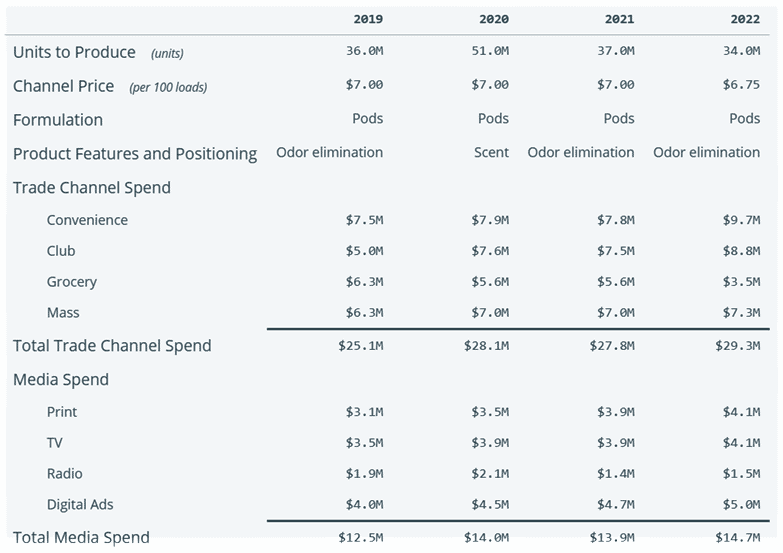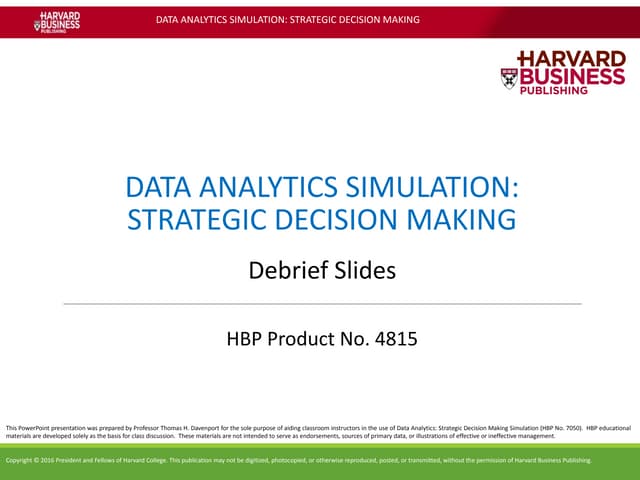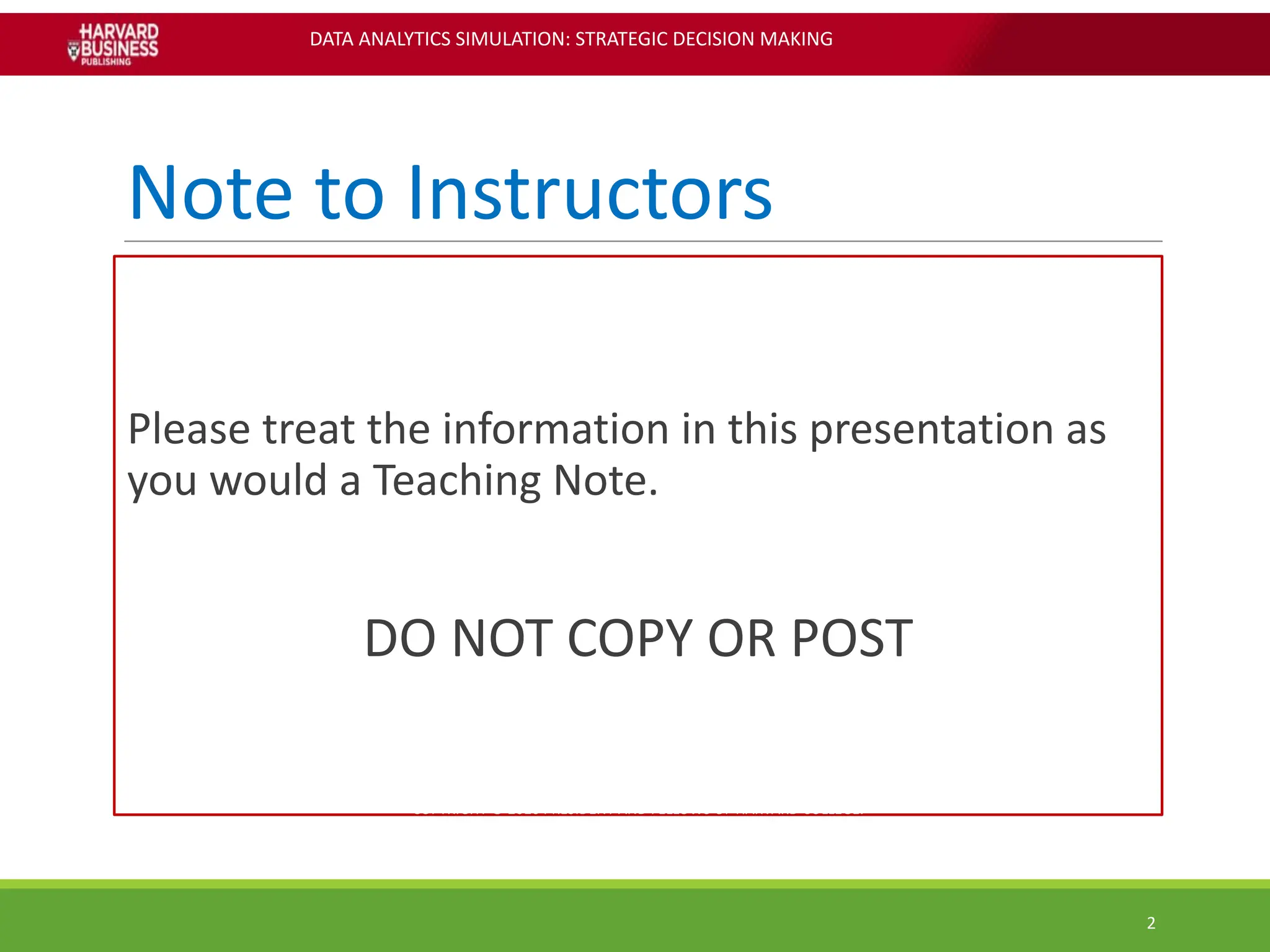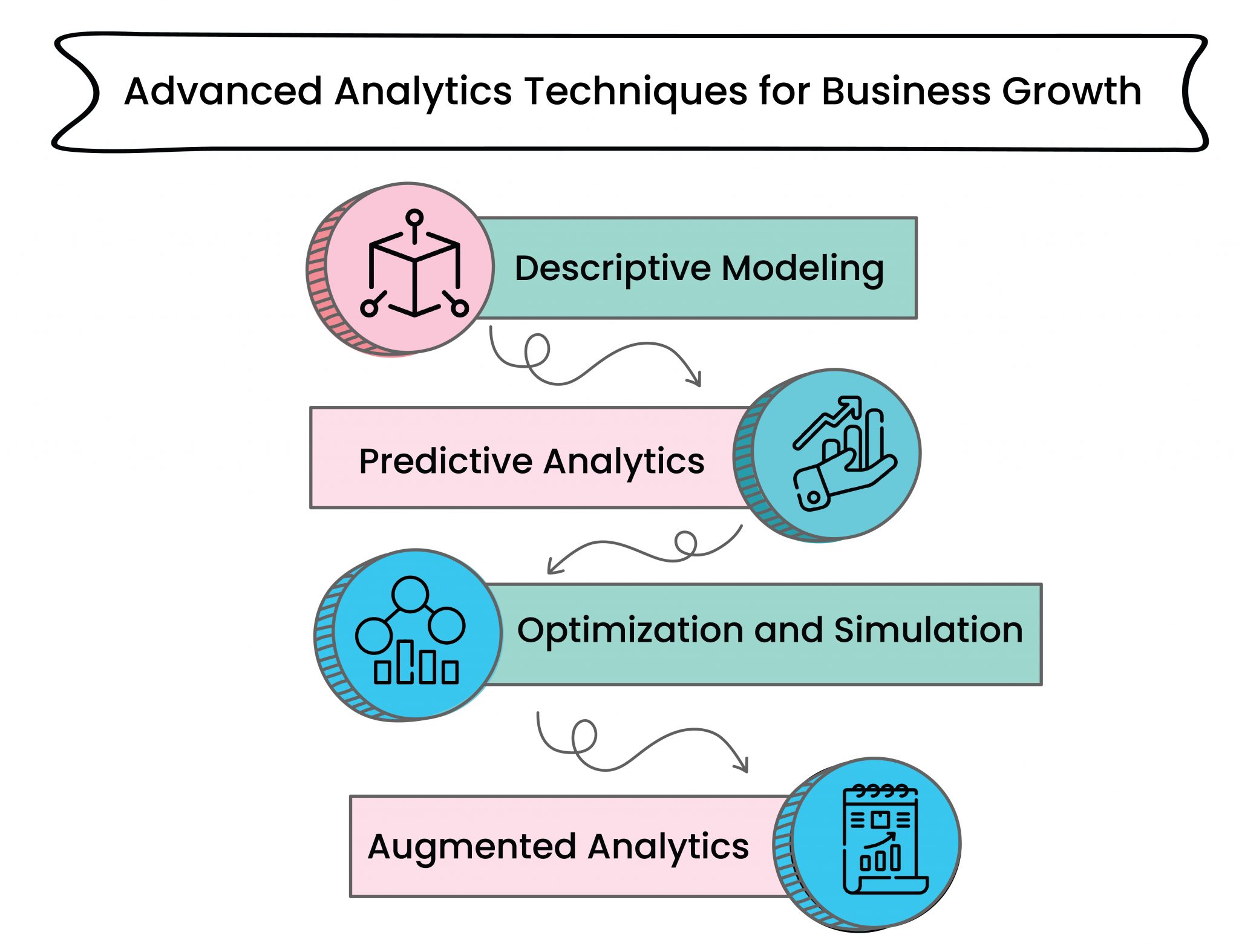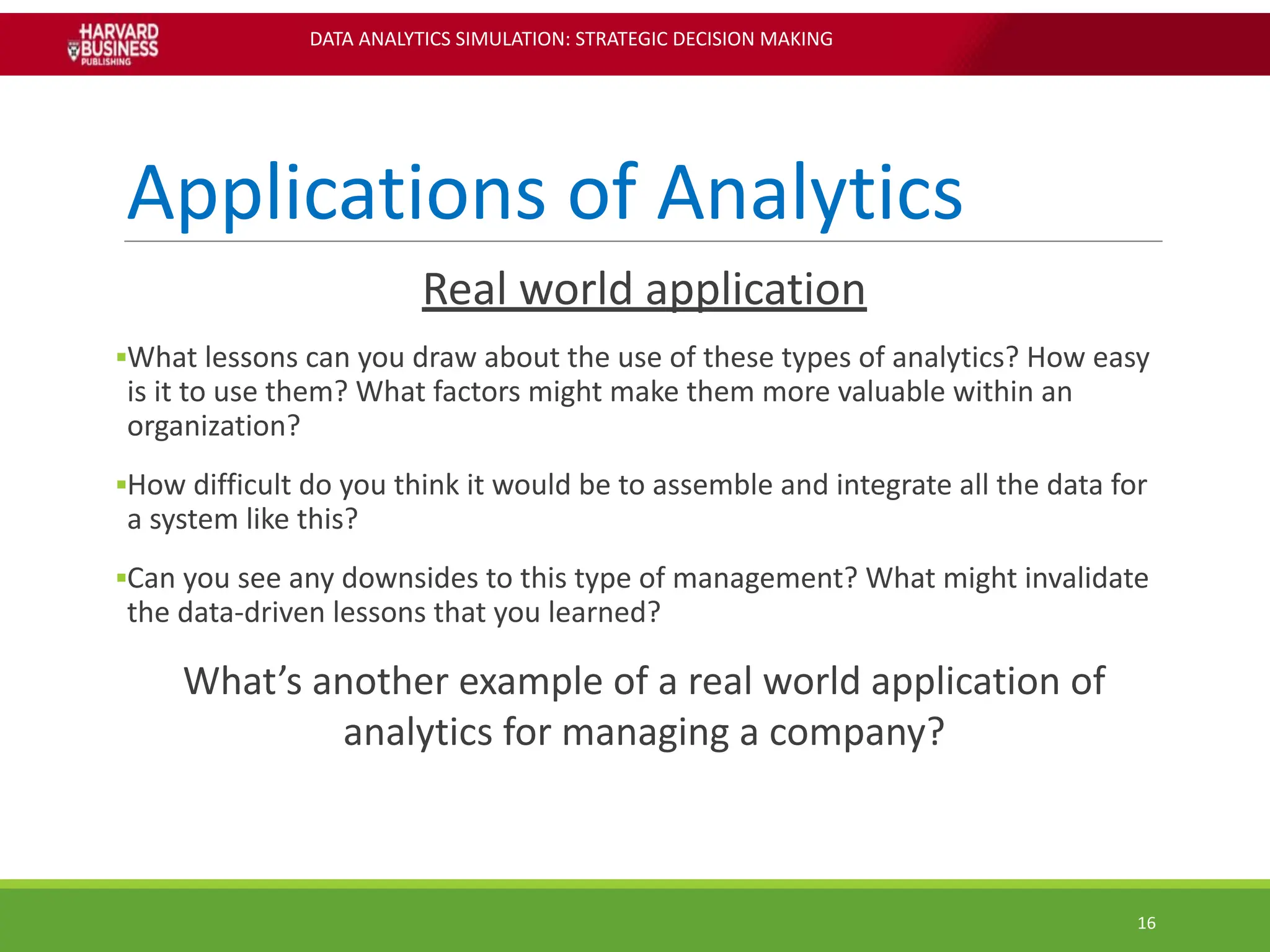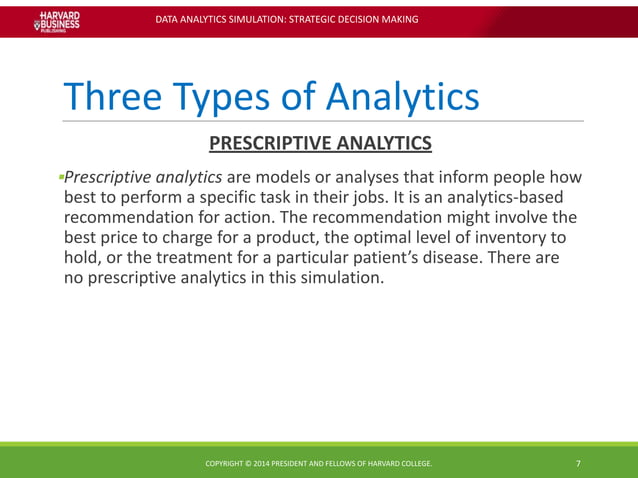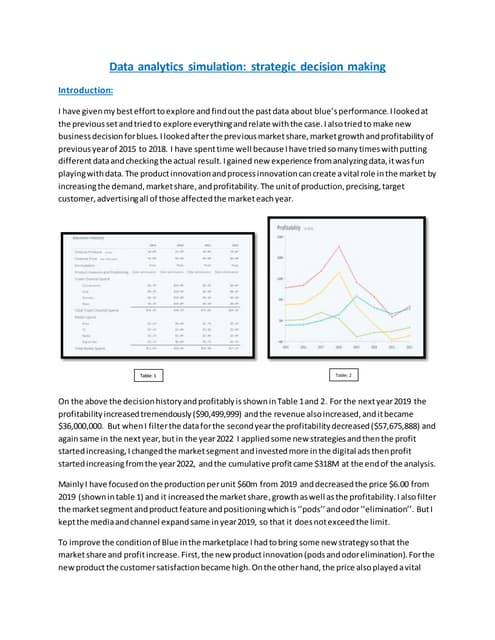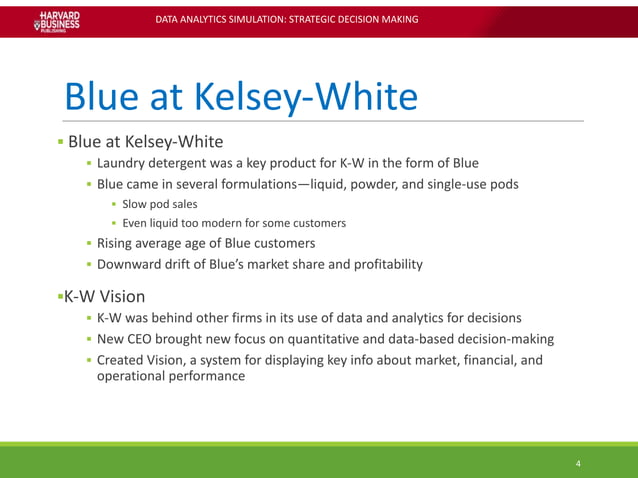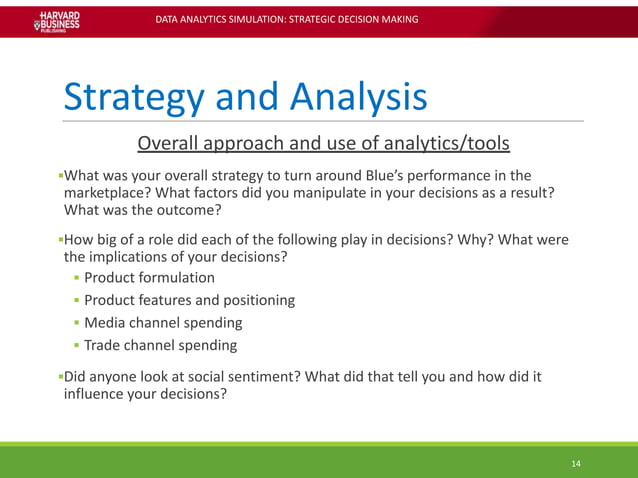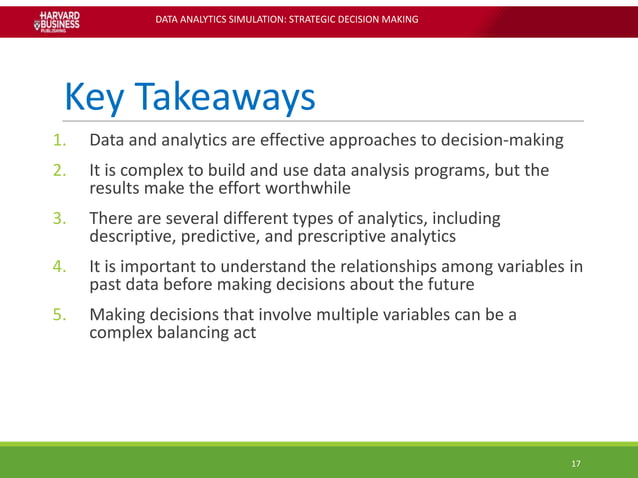Data Analytics Simulation Strategic Decision Making
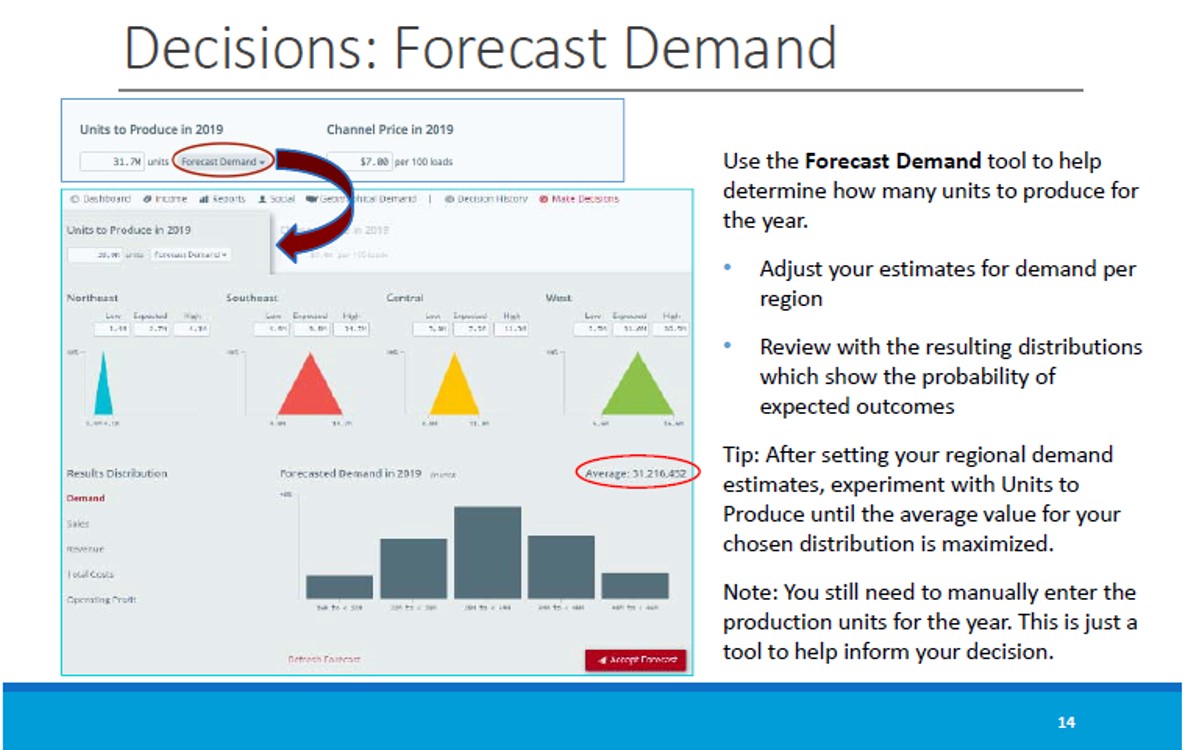
Imagine a bustling boardroom, not filled with tense executives and endless spreadsheets, but with teams huddled around interactive dashboards, their faces illuminated by the glow of simulated market trends. The air crackles not with anxiety, but with a palpable sense of excitement as they navigate virtual business landscapes, testing strategies and tweaking decisions in a risk-free environment.
This isn't a scene from a sci-fi movie, but a rapidly growing reality in the world of business education and strategic planning, powered by the increasing sophistication and accessibility of data analytics simulation.
At its core, data analytics simulation for strategic decision making leverages data science techniques to create realistic, interactive models of real-world business scenarios. These simulations empower decision-makers to explore different strategies, analyze potential outcomes, and ultimately make more informed and effective choices.
The Rise of Simulation-Driven Strategy
The concept of using simulations for training isn't new. The military, aviation, and healthcare industries have long relied on simulations to prepare individuals for high-pressure situations. However, the application of simulation to strategic decision making in business is a more recent development, fueled by the explosion of data and the advancements in analytical tools.
Early simulations were often complex and expensive, requiring specialized expertise and significant computational resources. Now, thanks to cloud computing, user-friendly software, and pre-built datasets, these tools are becoming increasingly accessible to organizations of all sizes.
A Shift in Perspective
Traditional methods of strategic decision making often rely on historical data, gut feeling, and best practices. While these approaches can be valuable, they can also be limited by biases, incomplete information, and a lack of real-world testing.
Data analytics simulation offers a powerful alternative by allowing decision-makers to experiment with different scenarios and observe the potential consequences in a controlled environment.
This allows for a much deeper understanding of the complex dynamics at play and provides a data-driven basis for making crucial choices.
How Data Analytics Simulation Works
The process typically involves several key steps. First, relevant data is collected from various sources, including internal databases, market research reports, and external economic indicators.
This data is then used to build a statistical model that represents the key relationships and dependencies within the business environment. These models often incorporate advanced techniques such as regression analysis, time series forecasting, and machine learning.
Once the model is built, users can interact with the simulation by adjusting various input parameters and observing the resulting changes in the simulated outcomes. For example, a marketing team might experiment with different pricing strategies and advertising campaigns to see how they impact sales and market share.
Benefits Beyond the Boardroom
The benefits of using data analytics simulation extend far beyond simply improving strategic decision making.
These simulations can also be used for training and development, allowing employees at all levels to gain a better understanding of the business and improve their analytical skills. For instance, sales teams can use simulations to practice their negotiation techniques in different scenarios, while operations managers can use them to optimize production processes.
Furthermore, data analytics simulation can foster a culture of experimentation and innovation within an organization. By providing a safe space to test new ideas and strategies, these tools can encourage employees to think outside the box and challenge the status quo.
Case Studies: Simulation in Action
Several organizations have already seen significant benefits from implementing data analytics simulation. A major retail chain used simulation to optimize its supply chain, resulting in a significant reduction in inventory costs and improved customer satisfaction.
According to a case study published by Deloitte, the retailer was able to simulate different scenarios, such as unexpected surges in demand or disruptions in the supply chain, and develop contingency plans to mitigate the impact of these events.
Another example comes from the pharmaceutical industry, where a company used simulation to accelerate the drug development process. By simulating clinical trials and analyzing the data, they were able to identify promising drug candidates more quickly and efficiently.
Overcoming Challenges
Despite the many benefits, implementing data analytics simulation can also present some challenges. One of the biggest challenges is ensuring the accuracy and reliability of the underlying data.
If the data is incomplete, inaccurate, or biased, the simulation will produce misleading results. It is also important to carefully validate the simulation model to ensure that it accurately reflects the real-world dynamics of the business environment.
Another challenge is ensuring that the simulation is user-friendly and accessible to a wide range of users. If the simulation is too complex or difficult to use, it may not be adopted by decision-makers.
The Future of Strategic Decision Making
The future of strategic decision making is undoubtedly intertwined with data analytics simulation. As the volume and complexity of data continue to grow, the need for sophisticated analytical tools will only become more pressing.
Advances in artificial intelligence (AI) and machine learning are also likely to play a key role in the evolution of data analytics simulation. These technologies can be used to automate the process of building simulation models, identify hidden patterns in the data, and provide personalized recommendations to decision-makers.
According to a report by Gartner, the market for data analytics simulation is expected to grow significantly in the coming years, driven by the increasing demand for data-driven insights and the growing availability of affordable and user-friendly simulation tools.
A Call to Action
For organizations looking to gain a competitive edge, investing in data analytics simulation is no longer a luxury but a necessity. By embracing these tools and fostering a culture of data-driven strategic decision making, businesses can navigate the complexities of the modern world and achieve sustainable success.
The ability to proactively anticipate market changes, test different strategies, and mitigate potential risks is becoming increasingly crucial in today's fast-paced business environment.
As we move further into the age of data, those who embrace the power of data analytics simulation will be best positioned to thrive.
The journey from gut feeling to data-driven insight is a challenging one, but the rewards are well worth the effort. The future of strategic decision making is here, and it's powered by the insights gleaned from simulated futures.
